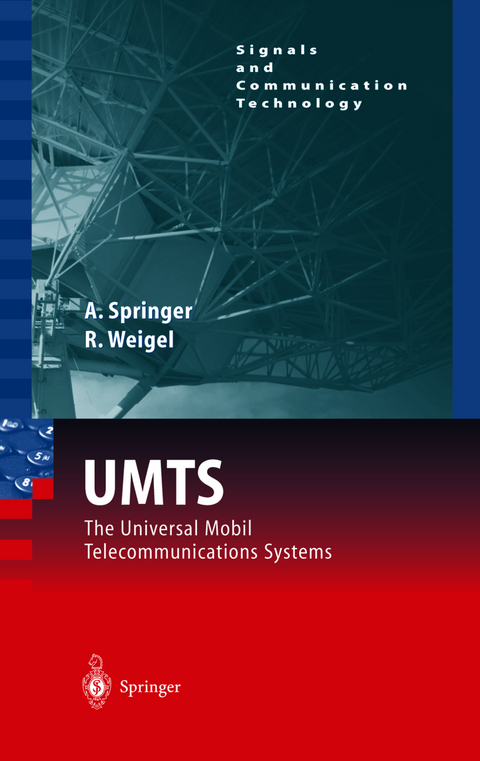
UMTS
Springer Berlin (Verlag)
978-3-540-42162-7 (ISBN)
From the contents:
- Introduction
- Fundamentals
- Spread Spectrum Techniques. - Code Division Multiple Access
- Introduction to UMTS
- The UMTS FDD Mode
- The UMTS TDD Mode
- Signals, Spectrum Mask, Modulation Accuracy, and Test Cases
- Physical Layer Implementation Aspects
- Further Developments
- References
- Abbreviations.
From the reviews:
"This book describes the physical layer of UMTS (universal mobile Telecommunication System) ... . It compiles in a clear fashion the main technical features of the physical layer standard together with a description of the basics of digital communications and spread spectrum technology on which UMTS relies. ... The reader will benefit from the standard description which frees him from studying lots of standardization documents. ... Many references are provided for readers interested in in-depth treatments of certain topics." (Comtec, June, 2003)
| Erscheint lt. Verlag | 11.6.2002 |
|---|---|
| Reihe/Serie | Signals and Communication Technology |
| Zusatzinfo | XIV, 298 p. |
| Verlagsort | Berlin |
| Sprache | englisch |
| Maße | 156 x 234 mm |
| Gewicht | 635 g |
| Themenwelt | Technik ► Elektrotechnik / Energietechnik |
| Technik ► Nachrichtentechnik | |
| Schlagworte | Broadband • Communication • communications • IMT 2000 • Internet • Mobile • Network • QoS • Quality of Service • Quality of Service (QoS) • Spread Spectrum • Standard • Standards • telecommunications • Third Generation • Transceiver • UMTS |
| ISBN-10 | 3-540-42162-9 / 3540421629 |
| ISBN-13 | 978-3-540-42162-7 / 9783540421627 |
| Zustand | Neuware |
| Haben Sie eine Frage zum Produkt? |
aus dem Bereich


